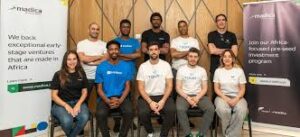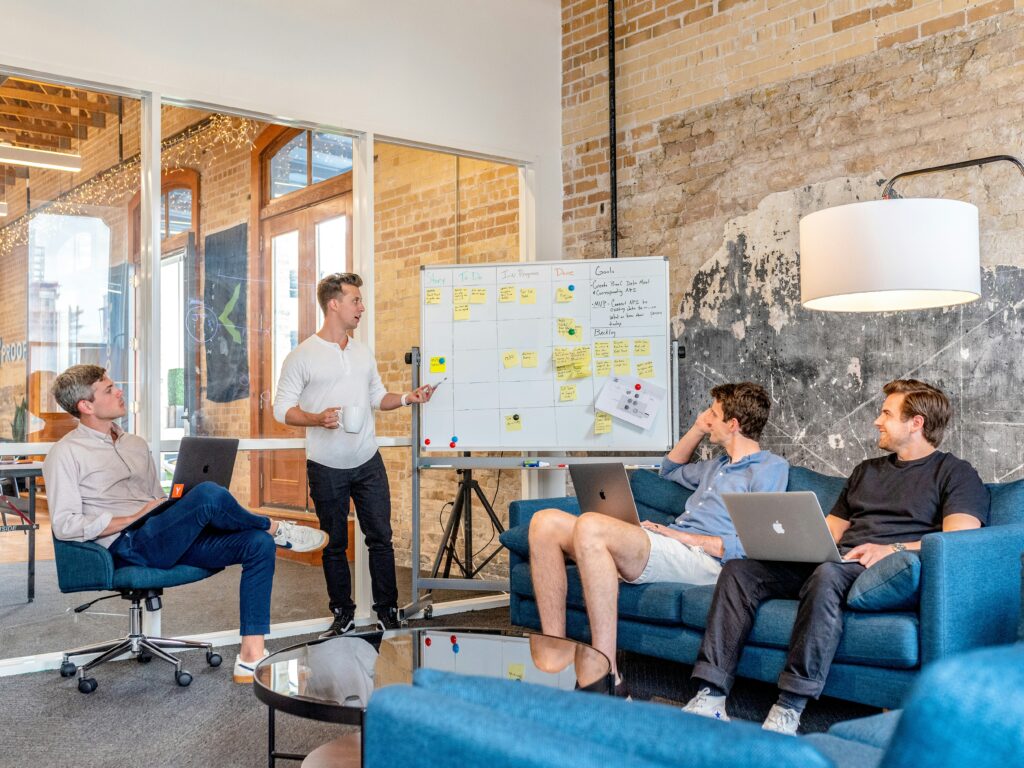The artificial intelligence startup landscape has fundamentally transformed in 2025, evolving from experimental model development to practical, revenue-generating applications that are reshaping entire industries. More than two years after ChatGPT’s explosive debut, the most successful AI startups are no longer competing in the model horserace—they’re building sophisticated applications that solve real-world problems.
The Great Pivot: From Models to Applications
The most significant trend defining AI startups in 2025 is the strategic shift from foundation model development to application-layer innovation. While model builders like OpenAI and Anthropic continue to dominate headlines with massive funding rounds, the real growth is happening among companies that leverage existing AI capabilities to automate complex workflows across engineering, healthcare, legal, and sales functions.
This transition reflects market maturity. The infrastructure wars have largely been won by a handful of well-funded giants, creating opportunities for nimble startups to focus on specialized use cases that deliver immediate value to specific industries and professions.
The New Generation of AI Leaders
The Revenue Velocity Champions
What distinguishes 2025’s AI startup winners isn’t just their technology—it’s their ability to achieve extraordinary revenue velocity. Three companies exemplify this trend:
Anysphere has achieved perhaps the fastest revenue ramp in AI startup history. Founded just three years ago by 24-year-old Michael Truell and three MIT classmates, Cursor has generated at least $100 million in annualized revenue (reportedly now $200 million) with only $176 million in total funding. This represents a revenue-to-funding ratio that’s virtually unheard of in enterprise software, demonstrating the immediate value of AI-powered coding assistance.
The secret isn’t just the technology—it’s the user experience. Engineers from Instacart and Samsung can transform natural language requests like “make me an 8-bit side-scroller video game” into functional code, democratizing software development in ways that directly compete with Microsoft’s GitHub Copilot. With the automated coding market projected to reach $30 billion by 2032, Anysphere’s early lead in user adoption could prove decisive.
Speak represents another revenue velocity success story, serving 10 million users learning English and Spanish while achieving a $1 billion valuation on just $162 million in funding. The language learning market’s global scale and recurring subscription model create powerful unit economics that traditional education companies cannot match.
OpenEvidence has achieved unicorn status by solving a specific, high-value problem: creating a “ChatGPT for doctors” that summarizes medical information. With $100 million in funding and Massachusetts-based operations, the company demonstrates how vertical AI applications can command premium valuations when they address mission-critical workflows.
The Youth Movement: Mercor‘s Bold Vision
Perhaps no company better represents the generational shift in AI entrepreneurship than Mercor, founded by 21-year-old CEO Brendan Foody and his college dropout cofounders. All Thiel Fellows, they’ve built a $2 billion-valued startup that uses AI to completely reimagine hiring processes.
Mercor’s platform automates employment screening through AI-powered video interviews conducted by avatars, analyzing resumes and cover letters to identify standout candidates. This approach addresses a critical pain point in traditional hiring: reducing subjective bias in favor of data-driven decision making. As Foody explains, their models can identify “features on résumés that are actually predictive” rather than relying on “very vibes-based assessment.”
Industry Veterans Building the Future
The startup ecosystem is also benefiting from experienced AI leaders launching new ventures. Mira Murati, former OpenAI CTO who briefly served as interim CEO during the company’s leadership crisis, has founded Thinking Machine Labs. Though secretive about specifics, the company is reportedly raising $1 billion at a $9 billion valuation focused on science and programming AI—demonstrating how executive pedigree can translate into extraordinary early valuations.
Similarly, Fei-Fei Li, the “Godmother of AI,” has launched World Labs with $291.5 million in funding. Her company develops AI models that understand physical spaces and generate explorable environments, with applications ranging from theme park attractions to flight training simulations. The backing from Silicon Valley luminaries like Andreessen Horowitz, Marc Benioff, and Reid Hoffman reflects confidence in Li’s vision for spatial intelligence.
The $142 Billion Ecosystem: Decoding Capital Efficiency Patterns
The Forbes AI 50 list reveals more than just funding scale—it exposes the fundamental economics of different AI business models. The 50 companies have collectively raised $142.45 billion, but the distribution tells a compelling story about capital efficiency and market positioning.
The Capital Concentration Paradox: OpenAI and Anthropic‘s combined $81 billion represents 57% of total funding but serves primarily as infrastructure for other companies’ applications. This creates a unique dynamic where the most capital-intensive companies enable the most capital-efficient ones.
Revenue-to-Funding Ratios: The most telling metric isn’t total funding but revenue generation per dollar raised:
- Anysphere: ~$1.14 revenue per funding dollar ($200M revenue / $176M funding)
- Traditional enterprise software: ~$0.30-0.50 revenue per funding dollar
- Foundation model builders: Often <$0.10 revenue per funding dollar initially
This disparity reveals why application-layer companies are increasingly attractive to investors seeking faster returns on capital.
Geographic Distribution and the Innovation Hub Analysis
The Forbes AI 50 reveals striking geographic concentration patterns that illuminate the global AI ecosystem:
San Francisco Dominance: 32 of 50 companies (64%) are based in the San Francisco Bay Area, reflecting the region’s unique combination of technical talent, venture capital, and AI infrastructure. This concentration creates network effects where proximity accelerates innovation cycles.
International Pockets of Excellence:
- London: Emerging as the European AI capital with companies like ElevenLabs, Synthesia, and Luminance
- Paris: Home to Mistral AI ($1.1B) and Photoroom, establishing France as a key European AI hub
- Toronto: Cohere‘s $1B success demonstrates Canada’s growing AI influence
- Tokyo: Sakana AI represents Japan’s scientific AI focus
- Germany: DeepL‘s translation success shows specialized market leadership
The Boston Exception: OpenEvidence‘s Cambridge location highlights how proximity to world-class research institutions (MIT, Harvard) can create competitive advantages in specialized domains like healthcare AI.
The Undervalued Insights: Hidden Patterns in the Data
The Age-Performance Correlation
Analysis of founding dates reveals surprising patterns about startup maturity and success:
2022-2024 Cohort (Recent Startups): 16 companies founded in this period have achieved remarkable scale, suggesting AI market timing has become favorable for rapid scaling.
2015-2019 Cohort (Early Movers): Companies like OpenAI (2015), Databricks (2013), and Scale AI (2016) have achieved mega-scale by being early to market and evolving with the technology.
The Bootstrap Exception: Midjourney stands out as the only major AI company with $0 reported funding, demonstrating that exceptional products can achieve scale through pure revenue generation. This challenges the assumption that AI companies require massive capital infusions.
Sector Velocity Analysis
Different AI application areas show varying rates of market adoption:
Developer Tools (Fastest): Anysphere, Windsurf, and others achieve immediate adoption because they directly impact daily workflows.
Enterprise Automation (Fast): Harvey, Glean, and Writer show strong adoption in professional services where efficiency gains are measurable.
Creative Tools (Moderate): Runway, Suno, and Synthesia face adoption barriers due to creative workflow integration challenges.
Healthcare (Slow but High-Value): Abridge and OpenEvidence require longer sales cycles but command premium pricing due to regulatory requirements and mission-critical nature.
Healthcare AI Transformation
Companies like Abridge ($458M raised) are revolutionizing medical documentation with AI notetakers for doctors, while OpenEvidence ($100M raised) has built a “ChatGPT for doctors” that summarizes medical information. These applications address specific workflow pain points that general AI tools cannot adequately solve.
Legal Technology Revolution
Harvey has raised $500 million to automate legal processes, while Luminance ($165M raised) focuses specifically on contract automation. The legal industry’s traditionally conservative adoption patterns are being overcome by AI tools that demonstrably improve accuracy and efficiency.
Creative Industry Disruption
Runway ($545M raised) leads video and image editing software, while newer entrants like Suno ($125M raised) tackle music generation and Pika ($135M raised) focuses on video creation. These companies are reshaping creative workflows while navigating complex copyright challenges.
The Infrastructure Imperative
The success of AI applications depends entirely on robust infrastructure, creating a thriving ecosystem of supporting companies. The compute-intensive nature of AI training and inference has been particularly beneficial for specialized infrastructure providers:
Crusoe Energy Systems ($1.6B raised) has built a $2.8 billion valuation by providing sustainable computing infrastructure specifically designed for AI workloads. The company’s approach of using stranded energy for AI computing addresses both performance and environmental concerns.
Lambda Labs ($863M raised, $2.5 billion valuation) provides cloud computing optimized for AI training, while Together AI ($534M raised, $3.3 billion valuation) offers platforms for deploying and scaling AI applications.
This infrastructure layer is critical because AI companies typically require expensive silicon chips and energy-intensive data centers for training and running their models. The specialized needs of AI workloads have created opportunities for focused providers to outperform traditional cloud giants in specific use cases.
Global Competition and the DeepSeek Factor
While the Forbes list focuses primarily on US-based companies, the global AI landscape includes significant players that operate with different business models and cost structures. Chinese company DeepSeek, though not included in the list due to opaque funding and business practices, has demonstrated that effective AI training can be achieved with dramatically lower costs than Western approaches.
This cost efficiency challenge is forcing US and European startups to become more capital-efficient while maintaining technological leadership. The companies that will succeed long-term must balance innovation with sustainable unit economics.
The Copyright Conundrum: Legal Challenges Shaping the Industry
One of the most significant challenges facing AI startups in 2025 is the ongoing litigation over copyright infringement. Multiple companies on the Forbes list, including OpenAI, Anthropic, Runway, Midjourney, ElevenLabs, Suno, Cohere, and Perplexity, face lawsuits alleging they trained their models on copyrighted works without permission.
These legal challenges aren’t just courtroom drama—they represent an existential threat to many AI business models. Publishers, artists, musicians, and authors argue that AI companies have illegally scraped their data to create competing products that threaten their livelihoods. While AI companies broadly claim fair use protections, the ultimate resolution of these cases will fundamentally shape the industry’s future.
The legal uncertainty creates both risk and opportunity. Startups that develop novel approaches to training data—such as synthetic data generation, licensed content partnerships, or proprietary data collection—may gain significant competitive advantages as copyright restrictions tighten.
Market Dynamics and Competition Intensity
The AI startup ecosystem has reached unprecedented competitive intensity. Forbes received 1,860 submissions for their AI 50 list, reflecting the massive entrepreneurial interest in the space. This competition is healthy for innovation but challenging for individual company success.
Success Factors in 2025
Analysis of the most successful companies reveals several key success patterns:
Technical Differentiation: Companies must offer genuinely superior AI capabilities, not just AI-powered versions of existing products.
Go-to-Market Excellence: The most valuable companies have cracked the code on customer acquisition and retention in their specific markets.
Capital Efficiency: While mega-rounds grab headlines, sustainable companies demonstrate strong unit economics and efficient growth.
Talent Density: Access to top-tier AI talent remains a critical differentiator, with successful companies often founded by industry veterans or exceptional young technologists.
Regulatory Navigation: Companies that proactively address copyright, privacy, and safety concerns position themselves for long-term success.
Investment Trends and Funding Evolution
The funding landscape for AI startups has evolved significantly in 2025. While early-stage funding remains available for promising teams and technologies, the majority of capital is flowing to later-stage companies with proven product-market fit and clear paths to profitability.
This trend reflects investor learning from previous technology cycles. Rather than betting purely on potential, investors are demanding evidence of real customer adoption and sustainable business models. The companies succeeding in this environment combine technical excellence with commercial sophistication.
The Path Forward: Predictions for 2026 and Beyond
Based on current trends and the companies highlighted in the Forbes AI 50, several predictions emerge for the AI startup landscape:
Consolidation Acceleration: The current fragmented landscape will likely see significant merger and acquisition activity as larger companies acquire specialized capabilities and talent.
Vertical AI Dominance: General-purpose AI tools will increasingly give way to highly specialized, industry-specific applications that deliver measurably superior outcomes.
Infrastructure Maturation: The infrastructure layer will stabilize around a few dominant providers, reducing costs and complexity for application developers.
Regulatory Clarity: Copyright and safety regulations will provide clearer operating guidelines, potentially disadvantaging some current players while enabling new business models.
International Competition: Global AI competition will intensify, with different regions developing distinct advantages in specific AI applications and business models.








